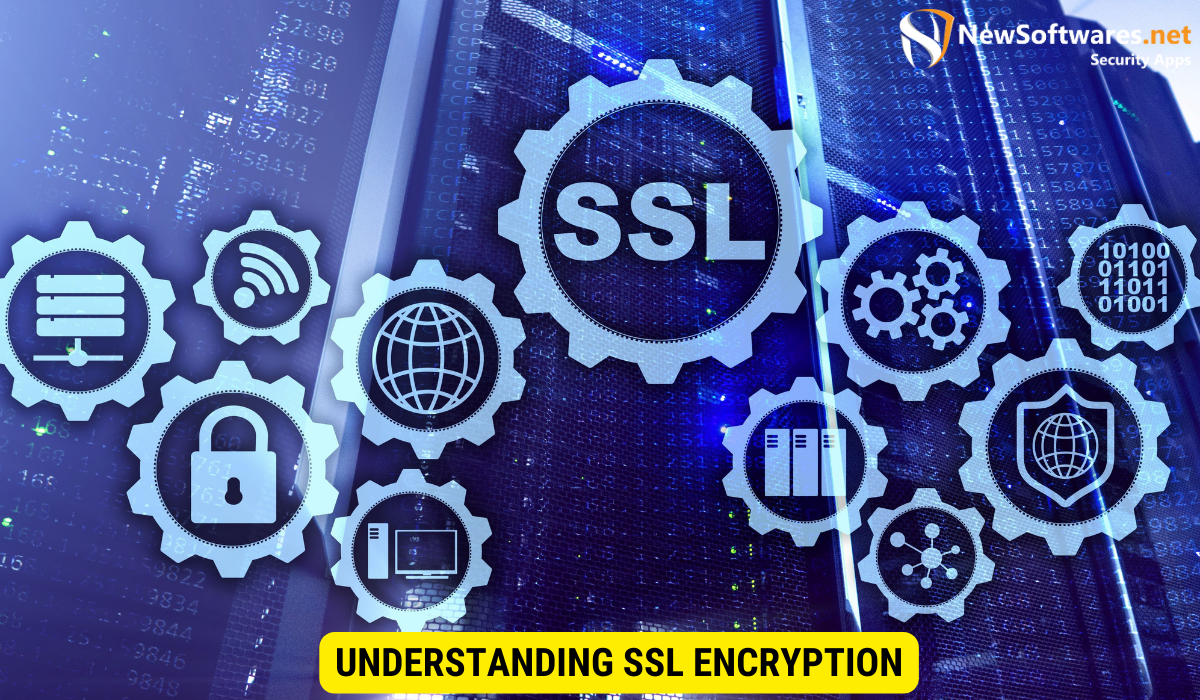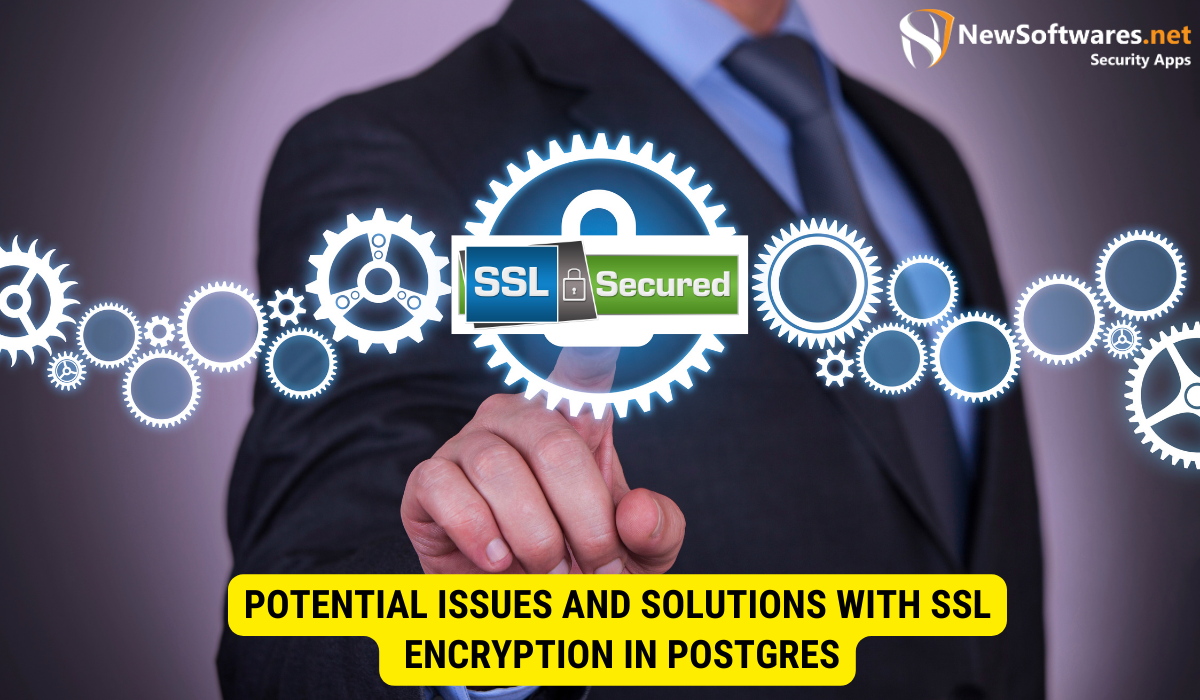Yes, SSL encryption plays a crucial role in securing data within PostgreSQL (Postgres) databases. It ensures that data remains confidential and protected from unauthorized access during transmission. Understanding SSL encryption in Postgres involves configuring SSL settings, obtaining and configuring digital certificates, and verifying SSL encryption status through tools like the “pg_stat_ssl” system view.
In today’s digital age, data security is of paramount concern. Whether it’s personal information, financial data, or business records, it is crucial to ensure that data remains confidential and protected from unauthorized access. When it comes to managing databases, one popular choice is PostgreSQL, commonly known as Postgres. But is Postgres data SSL encrypted? Together, we will discover the intricacies of SSL encryption and its role in securing data stored in Postgres.
Understanding SSL Encryption

Before delving into SSL encryption in Postgres, it’s essential to understand what SSL encryption is and how it works. (SSL) Secure Sockets Layer, is a standard protocol used to establish a safe and encrypted connection between a client and a server. It ensures that data transmitted between the two parties remains private and protected from potential eavesdropping or tampering.
SSL encryption provides a crucial layer of security for various online activities, including e-commerce transactions, online banking, and secure communication between servers. By encrypting data, SSL helps prevent sensitive information, for instance credit card numbers or login credentials, from falling into the wrong hands.
The Basics of SSL Encryption
At its core, SSL encryption uses cryptographic algorithms to encrypt data. These algorithms use complex mathematical calculations to transform plain text into ciphertext, which is unreadable without the corresponding decryption key.
When a customer initiates a connection to a server using SSL, the two parties engage in a series of exchanges to authenticate each other’s identity, negotiate encryption parameters, and establish a secure connection. This process involves digital certificates, which serve as proof of identity for the client and the server.
During the SSL handshake, the customer and server exchange public keys, which are used to encrypt and decrypt data. The client verifies the server’s identity by checking the digital certificate distributed by a trusted certificate authority. The client proceeds with the SSL connection if the certificate is valid and trusted.
How SSL Encryption Works
Once the SSL handshake is complete, data transmitted between the customer and the server is encoded using a symmetric encryption algorithm. This means the data is scrambled using a secret key known only to the client and the server. The encrypted data can only be decrypted by means of the same key, ensuring that the data remains unintelligible to unauthorized parties even if intercepted.
SSL encryption uses a combination of symmetric and asymmetric encryption. During the handshake, the client and server transfer a symmetric encoding algorithm and a session key. The session key is then used to encode and decrypt the data exchanged between the two parties.
Additionally, SSL encryption provides integrity and authentication mechanisms. It uses message authentication codes (MACs) to ensure that the data has not been tampered with during transmission. MACs are cryptographic hashes generated using the data and a secret key, which is then sent with the encrypted data. The receiver can confirm the integrity of the data by recalculating the MAC and comparing it to the received MAC.
Furthermore, SSL encryption can also provide forward secrecy, which means that even if a server’s private key is compromised in the future, previously recorded SSL communications cannot be decrypted. This is achieved using ephemeral keys during the SSL handshake, which are discarded after the session is terminated.
In conclusion, SSL encryption is vital in securing online communications and protecting sensitive information. By establishing a protected and encrypted connection between a client and a server, SSL ensures that data remains confidential and tamper-proof. Understanding the basics of SSL encryption is crucial for implementing and maintaining secure systems.
The Role of SSL in Postgres
Now that we know SSL encryption let’s explore its role in securing data in Postgres. Postgres is a powerful open-source relational database management system known for its robustness and security features. SSL plays a crucial role in protecting data within the Postgres ecosystem.
Importance of SSL in Data Protection
One of the primary reasons for implementing SSL encryption in Postgres is to protect sensitive information during transmission. When data is encrypted, it becomes extremely difficult for invaders to access it, even if they manage to intercept the communication. This ensures that data remains confidential and tamper-proof, bolstering overall data protection.
SSL provides a safe channel between the client and the server, ensuring that data is transmitted securely over the network. It uses a blend of encryption algorithms and digital certificates to establish a secure connection. This means that even if an attacker manages to intercept the communication, they won’t be able to decipher the encrypted data without the proper decryption keys.
Furthermore, SSL also provides authentication, ensuring that the customer is connecting to the intended server and not an imposter. This stops man-in-the-middle attacks, where an attacker intercepts the communication and poses as the server to gain access to sensitive information.
SSL Implementation in Postgres
Postgres provides robust support for SSL encryption, making it easy to configure and enable SSL for secure communication. SSL can be enabled for client-server communication and replication connections, ensuring end-to-end security. By default, SSL encryption is disabled in Postgres. However, administrators can enable and configure SSL settings to suit their specific security requirements.
Enabling SSL in Postgres involves generating and configuring SSL certificates. These certificates are used to establish the identity of the server and the client during the SSL handshake process. The server certificate is contracted by a trusted certificate authority, ensuring that clients can verify the server’s authenticity. Clients can also be configured to require a valid client certificate, adding an extra layer of security.
Postgres supports various SSL encryption algorithms, including AES, Blowfish, and Triple DES. Administrators can choose the encryption algorithm that best suits their security needs. Additionally, Postgres allows for configuring SSL protocols, such as TLS 1.2 or TLS 1.3, to ensure compatibility with the latest security standards.
Overall, SSL encryption in Postgres provides a robust and reliable method for securing data in transit. By implementing SSL, organizations can ensure their data’s confidentiality, integrity, and authenticity, protecting it from unauthorized access and tampering.
Postgres and Data Encryption
While SSL encryption focuses on securing data during transmission, data encryption in Postgres takes protection one step further by ensuring that data remains encrypted even when at rest. Postgres offers various encryption mechanisms that can be utilized to encrypt data stored on disk.
Overview of Postgres Data Encryption
Postgres provides several encryption approaches, including full disk, file-level, and column-level encryption. Full disk encryption involves encrypting the entire disk where the database resides, protecting all stored data. File-level encryption provides the ability to encrypt individual files within the database, offering granular control over encryption. Column-level encryption allows for specific columns to be encrypted, giving sensitive data an extra layer of security.
Postgres Encryption Mechanisms
Postgres supports various encryption mechanisms, such as symmetric-key encryption, asymmetric-key encryption, and hashing. Symmetric-key encoding uses a single key to encrypt data, while asymmetric-key encryption uses two keys: encryption and decryption. Hashing is primarily used for data integrity verification rather than encryption. Postgres provides extensive documentation on these encryption mechanisms, enabling administrators to choose the most suitable approach for their needs.
SSL Encryption in Postgres: A Detailed Look
Now that we have explored SSL encryption and data encryption in Postgres separately let’s take a closer look at SSL encryption in the context of Postgres. Configuring SSL in Postgres involves a few steps that must be followed carefully to ensure a secure connection.
Configuring SSL in Postgres
The first step in configuring SSL in Postgres is obtaining and configuring the necessary digital certificates. These certificates are essential for authenticating the client and the server during the SSL handshake. Postgres supports both self-signed certificates and certificates issued by trusted certificate authorities. Once the certificates are in place, the Postgres configuration files need to be updated to enable SSL and specify the location of the certificates.
Verifying SSL Encryption in Postgres
After SSL is enabled and configured in Postgres, it is imperative to verify that SSL encryption is taking place. Postgres provides various tools and methods to verify SSL encryption. One such method is the “pg_stat_ssl” system view, which displays information about SSL connections and encryption status. Administrators can use this view to establish SSL encryption and monitor the overall SSL connection statistics.
Potential Issues and Solutions with SSL Encryption in Postgres

While implementing SSL encryption in Postgres offers robust security benefits, there may be potential issues that administrators might encounter. Let’s look at some common SSL encryption problems in Postgres and explore possible solutions.
Common SSL Encryption Problems in Postgres
One common issue that administrators may face is the misconfiguration of SSL settings. Incorrect configuration can lead to failed SSL connections or weak encryption setups. Another issue can arise from the expiration or revocation of SSL certificates. Administrators need to stay vigilant and ensure that certificates are renewed or replaced promptly to avoid disruptions in secure communication.
Troubleshooting SSL Encryption Issues in Postgres
To troubleshoot SSL encryption issues in Postgres, administrators can refer to the error logs and system views provided by Postgres. These logs and views can offer valuable insights into the cause of SSL-related errors, enabling administrators to identify and resolve the issue effectively. Additionally, seeking assistance from the Postgres community or engaging professional support can provide further guidance in troubleshooting SSL encryption issues.
Key Takeaways
- SSL encryption in PostgreSQL (Postgres) ensures data confidentiality and protection during transmission.
- Configuring SSL in Postgres involves obtaining and configuring digital certificates and updating configuration files.
- Monitoring SSL encryption status using tools like “pg_stat_ssl” is essential to verify secure connections.
- Common issues with SSL encryption in Postgres include misconfigurations and expired certificates.
- SSL encryption can be combined with other encryption mechanisms for comprehensive data security.
FAQs
Why is SSL encryption important for data in Postgres?
SSL encryption in Postgres is essential to protect sensitive information during transmission. It ensures data confidentiality and prevents unauthorized access, making it a vital component of data security.
How can SSL encryption be configured in Postgres?
To configure SSL encryption in Postgres, administrators need to obtain and configure digital certificates, update Postgres configuration files, and verify SSL encryption status using system views and logs.
What are some potential issues with SSL encryption in Postgres?
Common issues include misconfigurations, expired or revoked SSL certificates, and weak encryption setups. Regular monitoring and troubleshooting are essential to address these problems.
Can SSL encryption be combined with other data encryption mechanisms in Postgres?
Yes, SSL encryption can complement other data encryption mechanisms in Postgres, such as full disk, file-level, or column-level encryption, to provide comprehensive data security.
Why is SSL encryption significant in today’s data security landscape?
In the digital age, SSL encryption is crucial to protect data during transmission and maintain its confidentiality and integrity. It helps safeguard sensitive information from cyber threats and unauthorized access.
Conclusion
As data security continues to be a significant concern, SSL encryption is vital in ensuring the confidentiality and integrity of data transmitted and stored in databases. Postgres offers robust support for SSL encryption, enabling administrators to configure secure connections and protect data in transit. Combining SSL encryption with data encryption mechanisms available in Postgres provides a comprehensive security framework for safeguarding sensitive information. By understanding the intricacies of SSL encryption and applying best practices, organizations can ensure that their Postgres data remains secure despite evolving cybersecurity threats.
